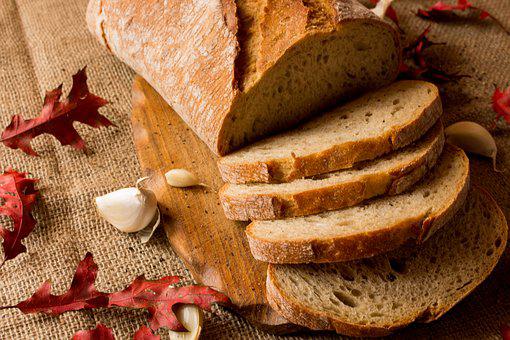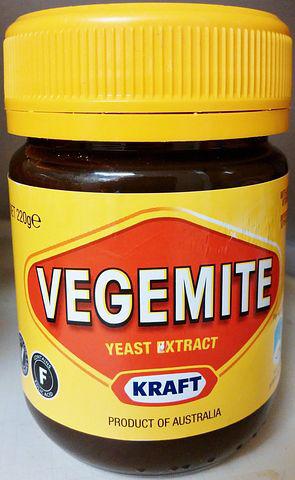Vegemite is a thick, brown, shiny paste made from brewer’s yeast, which is left over from the brewing process. In Australia, the spread is often smeared on buttered toast or stirred into recipes to deepen savory notes.
Vegemite’s History

It was in 1922 that Fred Walker (1884-1935) of Melbourne, Australia, decided to experiment with making a “yeast extract” that was both delicious and nourishing for his Fred Walker Cheese Company to market. Vegemite spread was devised by Dr. Cyril P. Callister, who worked for Fred’s company and was the company’s top scientist. To produce this dish, he combined brewer’s yeast with celery, onion, salt, and a few other unidentified ingredients.
There was a national competition in 1924 to name the new product, with a reward of 50 pounds going to the winner or winners. Sheilah, Fred’s daughter, chose the name ‘Vegemite’ among the many submissions.

Vegemite’s poor sales were due to its distinctive and distinct flavor. Renaming and registering Parwill in 1928, Vegemite was aimed for increasing sales and drawing customers away from Marmite’s customers (an English yeast spread that dominated the Australian market since 1910). In order to build out a market niche for his spread, Walker used the “if Marmite…then Parwill” logic. Walker’s play on words with the name Parwill failed to catch on. Only in Queensland did it go by the name of Parwill. 1935 saw the name withdrawn and the original one reintroduced.

Walker had already made arrangements with James L. Kraft, a Chicago, Illinois-based corporation, in 1925 to manufacture processed cheese in the Australian outback. Along with Fred Walker and Co., the Kraft Walker Cheese Co. was founded. Walker resurrected Vegemite in 1935 with the help of the popularity of his processed cheese. For a period of two years, the Fred Walker Cheese Company offered a free jar of Vegemite with the purchase of other Fred Walker Cheese Company items. The product was a big hit in Australia. Vegemite was already on its way to becoming a household name.
When the company organized another poetry competition two years later, this product was once again in the spotlight across the country. The rewards this time were imported Pontiacs from the United States. More people entered and more people bought.

Kraft Foods bought the formula and the methods of production in 1935, and since then they have been exclusively owned and manufactured in the United States. The British Medical Association endorsed the product in 1939, allowing doctors to suggest it as a Vitamin B-rich, nutritionally balanced diet for their patients.
During World War II, Vegemite was included in the rations of Australian troops, sailors, and civilians. They came in seven-pound, eight-ounce and half-ounce containers, depending on where they were being deployed and how much Vegemite they needed. As a result of this war-time need, civilians had to make do with less. As a result, commercials were produced to clarify the situation:
The men of the north have nothing on Vegemite! When it comes to Vegemite, hundreds of invalids are urging you to give it up for the time being if you don’t require it for medical reasons.
The salt concentration was reduced from 10% to 8% in recent years, which was the primary adjustment to the original recipe.
J. Walter Thompson advertising’s 1954 marketing activities helped Vegemite gain prominence. This song, “The Happy Little Vegemite Song,” was sung by a chorus of happy, healthy youngsters (see below). On radio in 1954, the song was then broadcast on television for the first time in 1956. This public relations effort went on until the end of the 1960s.
Who Knows the Secret Ingredient in Vegemite?

Vegemite has a savory, salty, and meaty flavor that makes it a popular condiment (although there is no meat or meat by product in it). To put it another way, the flavor is like a super-concentrated tamari or soy sauce. Vitamins such as thiamine, niacin and riboflavin are found in Vegemite, as well as yeast extract, malt extract, vegetable extract, and salt. Because of its excellent nutritional value, the Australian staple has been approved by the British Medical Association (BMA). It’s touted as a kid-friendly, nutritious option.
Yeast extract is the primary ingredient of Vegemite, which is why it’s so popular. Fresh yeast is used to make yeast extracts, which are made by fermenting and separating the yeast cells. As flavoring compounds in savory dishes, or as food additives or nutrients for bacterial culture, they are the most common usage.
Toasting Vegemite with Butter
While there isn’t a specific recipe for this toast, there is an acceptable manner to consume it. Apply a generous amount of butter to the toast immediately after it has come out of the toaster. The trick to this recipe is to use toast that has just come out of the toaster. On the buttered slice, spread a small amount of Vegemite.
Vegemite spreads more easily with the help of the butter, which also helps to reduce the flavor’s potency. In addition to cheese and avocado, you can also build a Vegemite sandwich by placing another toast on top of the first.
Vegemite Sandwiches (Veggie Sanger)
Ingredients
- Nutrition
- Crumpets are a type of bread. (You can use whole meal or wholegrain bread if you’d prefer)
- Butter
- Vegemite
Directions
- Using two slices of bread, spread one side with butter.
- (If you like whole meal or wholegrain bread, go ahead.) However, white bread was the norm when I was a kid.
- Butter should be topped with a thin layer of Vegemite — (thin is better as Vegemite goes a long way).
- Place more toppings on top of the Vegemite layer.
- Cut the Vegemite san sandwich in half after assembling the two slices of bread.
Two buttered slices of bread, Vegemite, and cheese are traditional components of a Vegemite vegetable sandwich, however other items including lettuce, avocado, and tomato can be used. Cheese mite scrolls, for example, can be stuffed with vegemite, or it can be used in more unusual cuisines.
